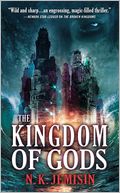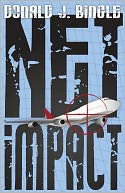I’m splitting my Hugo Novella reading into two parts, on account of novellas are long, so it’s taking me more time to get through them.
My other Hugo reviews/thoughts so far:
#
 Kiss me Twice, by Mary Robinette Kowal – Reading this story made me think of Asimov’s Robot Detective books with Elijah Bailey and his robot partner R. Daneel Olivaw. Both present interesting mysteries. Both explore the relationship between human and artificial intelligence. Both question the implications and possibilities of artificial life, the rules and the loopholes.
Kiss me Twice, by Mary Robinette Kowal – Reading this story made me think of Asimov’s Robot Detective books with Elijah Bailey and his robot partner R. Daneel Olivaw. Both present interesting mysteries. Both explore the relationship between human and artificial intelligence. Both question the implications and possibilities of artificial life, the rules and the loopholes.
I liked the Asimov books, but I like Kowal’s story even better. Much of this is due to the character of Metta, the police department’s A.I. I love how Kowal developed this character, the way Metta adopts a different persona for every police officer (much as a human might change clothes depending on the situation), the Mae West quotes she uses to joke with Huang, the way she’s simultaneously supercompetent and aware in the way only a computer can be, but also vulnerable and, if you’ll forgive the conceit, human.
Detective Huang is a good protagonist, too. A decent, determined, well-developed character who treats Metta more like a partner than a machine, which means he’s invested on all levels when something happens to her.
This is a fun, well-paced story which asks interesting questions, presents various nifty and shiny SFnal ideas, and made me blow off several things I needed to get done so I could find out how it ended. I’ve told Mary that 1) she should turn this into a book and 2) I want to write a blurb for that book.
 Silently and Very Fast, by Catherynne Valente – I’ll be honest, Valente’s skill with language and imagery made me question whether I was a good enough writer to review this one. (I decided to do it anyway!) This is a wonderfully layered story. It’s retold fairy tales and romance and tragedy and poetry and the power of story/myth and post-singularity science fiction all woven together.
Silently and Very Fast, by Catherynne Valente – I’ll be honest, Valente’s skill with language and imagery made me question whether I was a good enough writer to review this one. (I decided to do it anyway!) This is a wonderfully layered story. It’s retold fairy tales and romance and tragedy and poetry and the power of story/myth and post-singularity science fiction all woven together.
Like Kowal’s story, “Silently and Very Fast” deals in part with the relationship between humans and artificial intelligence. Elefsis is a program who started as the virtual keeper of a house, but grew into so much more thanks to the love and attention of a child, Ceno. It’s a relationship that can’t be forced into human terms. Ceno is Elefsis’ parent and lover and sibling and so much more. Thanks to the neural hardware, they’re literally a part of one another.
Over the years we see Elefsis grow and pass from one family member to another as the humans age and die. We learn how the world has evolved during this time, and the lengths they’ve gone to in order to protect Elefsis.
There were parts I didn’t understand at first. Only as I kept reading did some of those earlier scenes and stories slip so beautifully into place. I strongly recommend reading this one twice, because the parts become that much more gorgeous and powerful once you’ve seen the whole.
 Countdown ($2.99), by Mira Grant – “Countdown” is a prequel to Grant’s Newsflesh trilogy (including her Hugo-nominated novel Deadline). Having read the first two books of that trilogy, I enjoyed getting all of the background information on how the zombie uprising began, and seeing characters who until now had just been mentioned in a historical context.
Countdown ($2.99), by Mira Grant – “Countdown” is a prequel to Grant’s Newsflesh trilogy (including her Hugo-nominated novel Deadline). Having read the first two books of that trilogy, I enjoyed getting all of the background information on how the zombie uprising began, and seeing characters who until now had just been mentioned in a historical context.
I think, if you’ve read and enjoyed the books, then this will be a good, powerful story, one you should definitely check out. The pacing and voice are similar to Grant’s other books, but the structure is different: “Countdown” is broken into lots of smaller segments from various characters’ perspectives as the inevitable undead uprising unfolds.
If you haven’t read the books, I don’t know if this will work as well. (Or if you read the books but they weren’t to your liking.) Some of the power of the story comes from knowing what happens later on. For example, seeing the Masons as good, determined, loving people and knowing what’s about to happen and the kind of people it turns them into was simply tragic. On the other hand, much of it works just as well in isolation–like the stories and fates of those involved in creating the original viruses.
Mira Grant/Seanan McGuire is up for four Hugos, but I think this one might be a long shot. While “Countdown” does stand alone, I think it will be more powerful and effective to fans of the books.
#
Comments and discussion are very much welcome, as usual.
 Wild Things [Amazon | B&N | Mysterious Galaxy], by Charles Coleman Finlay. Charlie is an amazing writer, and broke in years ago by essentially turning the Magazine of Fantasy and Science Fiction into the Magazine of Charlie Finlay and Maybe a Few Other People. He was kind enough to send me his collection as a Christmas gift. I’ve read and enjoyed several of the stories so far, but haven’t yet finished the book, on account of I suck. Or maybe I just get cranky because he writes better short fiction than me. Jerk.
Wild Things [Amazon | B&N | Mysterious Galaxy], by Charles Coleman Finlay. Charlie is an amazing writer, and broke in years ago by essentially turning the Magazine of Fantasy and Science Fiction into the Magazine of Charlie Finlay and Maybe a Few Other People. He was kind enough to send me his collection as a Christmas gift. I’ve read and enjoyed several of the stories so far, but haven’t yet finished the book, on account of I suck. Or maybe I just get cranky because he writes better short fiction than me. Jerk.












 Unfortunately, the interviewer seems more interested in talking about what a shame it is women can’t support each other, and how Rhimes was oh so wrong to criticize a fellow woman. Sherman-Palladino indirectly addresses Rhimes’ question around the 3:05 mark, when she starts talking about all of the pressures of making a pilot episode, how she had to find dancers who could also act, and she didn’t have a lot of time, and “I don’t do message shows. I don’t give a shit who you learn your life from.”
Unfortunately, the interviewer seems more interested in talking about what a shame it is women can’t support each other, and how Rhimes was oh so wrong to criticize a fellow woman. Sherman-Palladino indirectly addresses Rhimes’ question around the 3:05 mark, when she starts talking about all of the pressures of making a pilot episode, how she had to find dancers who could also act, and she didn’t have a lot of time, and “I don’t do message shows. I don’t give a shit who you learn your life from.” I made it anyway.
I made it anyway.



 I’ve got two more advance review copies of Libriomancer sitting at home, and I want to give them away. If you want one, all you have to do is leave a comment telling me why you should get it. (If you’re commenting anonymously, please make sure I have a way to get in touch with you if you win.)
I’ve got two more advance review copies of Libriomancer sitting at home, and I want to give them away. If you want one, all you have to do is leave a comment telling me why you should get it. (If you’re commenting anonymously, please make sure I have a way to get in touch with you if you win.)